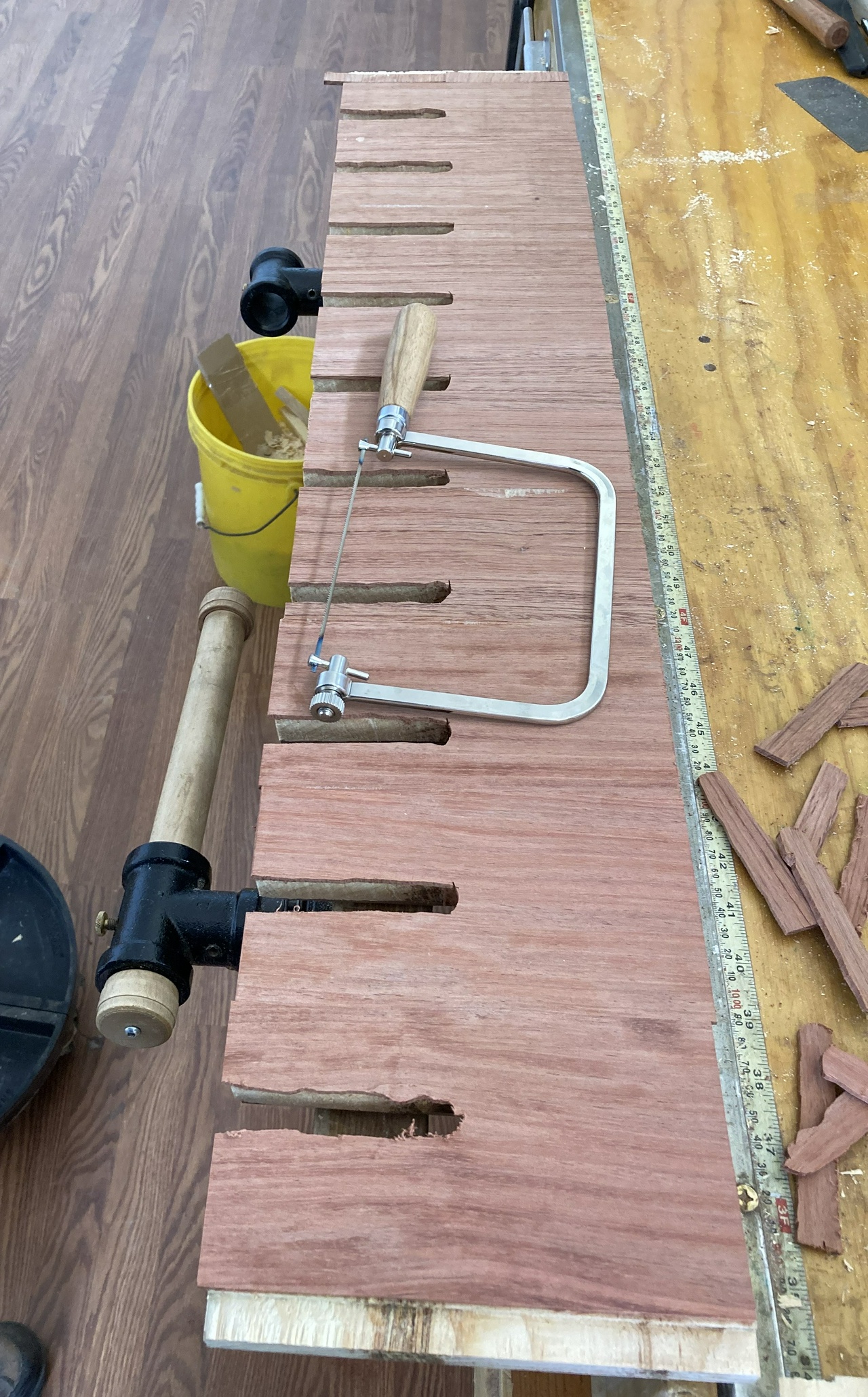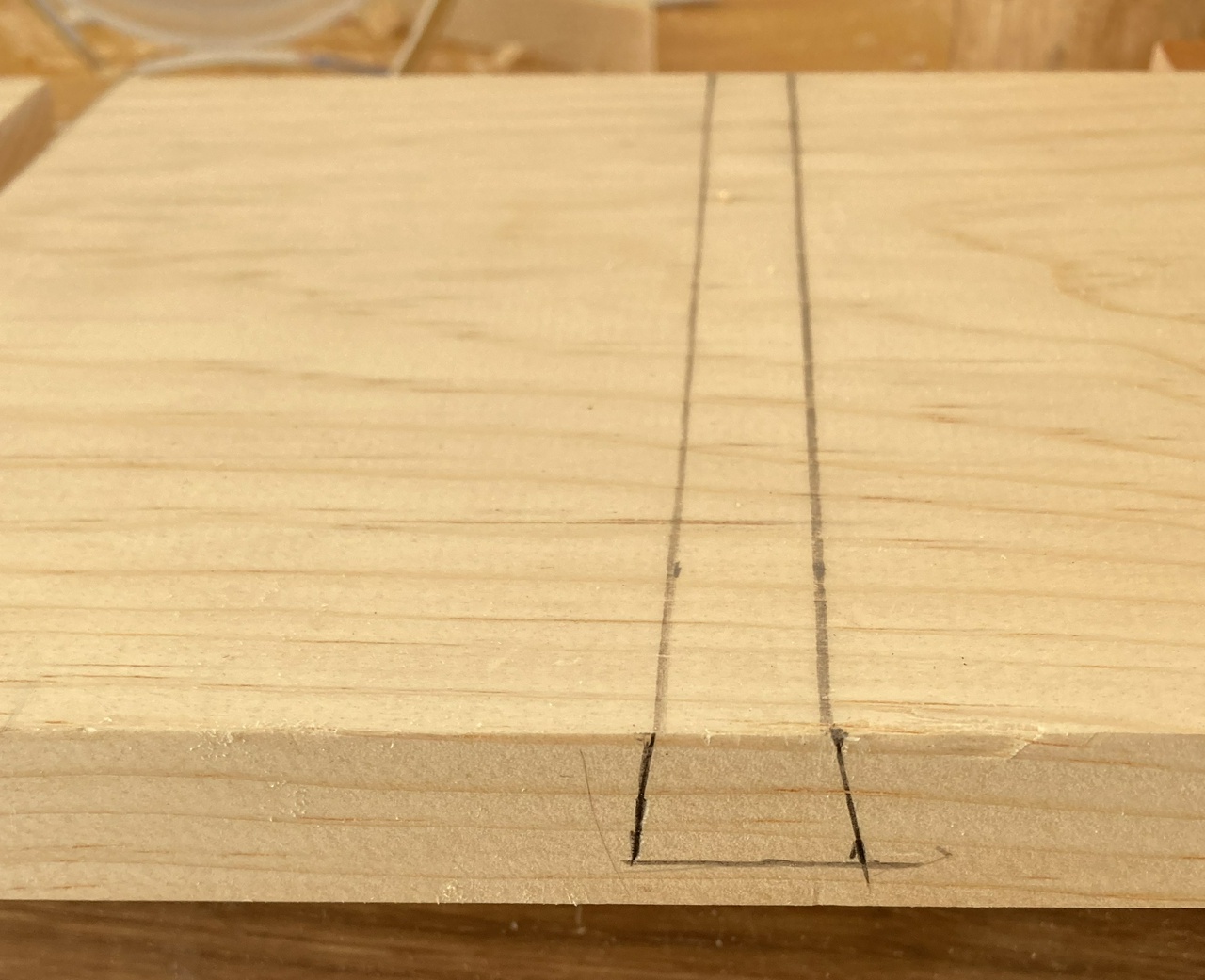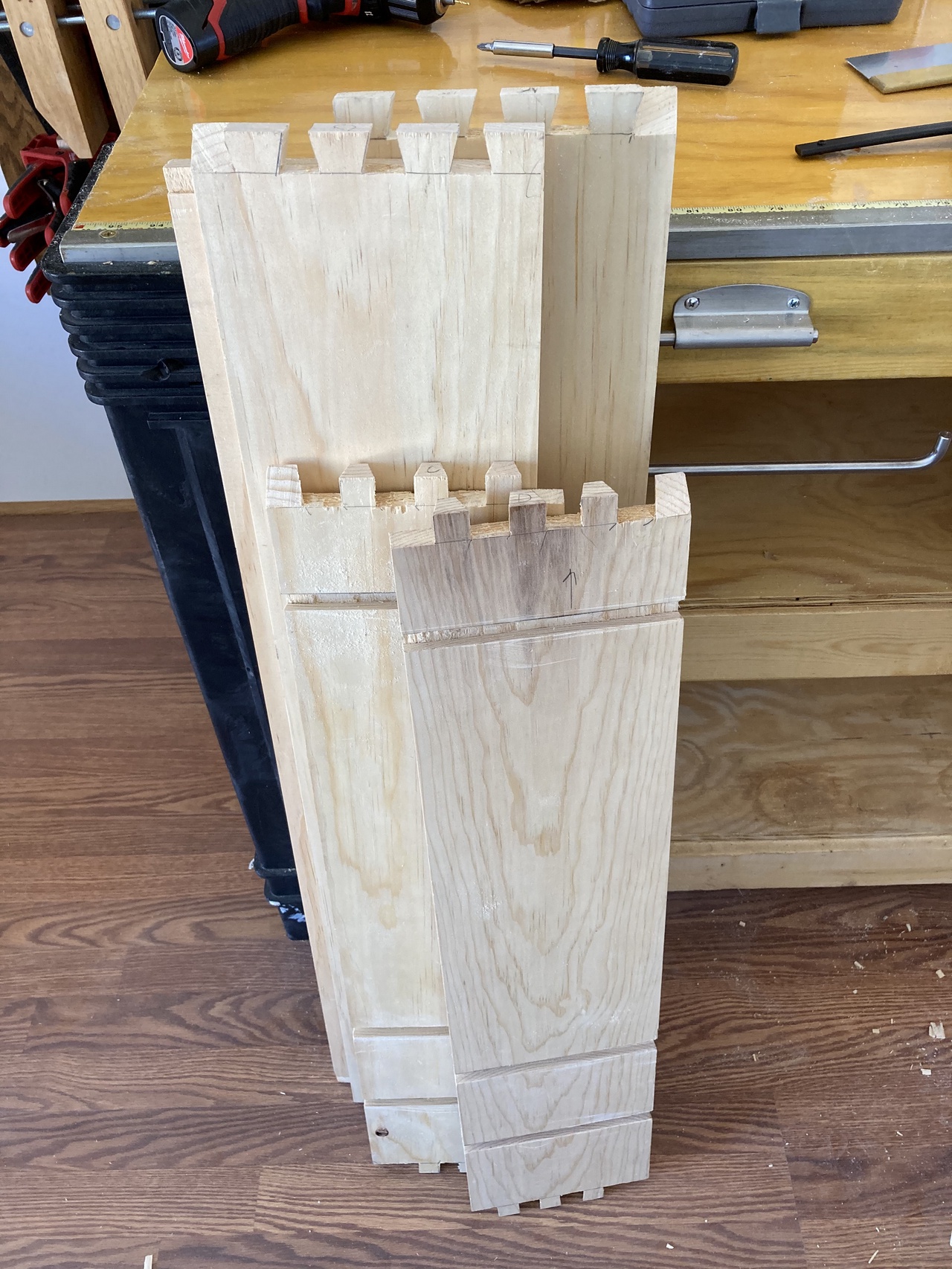Boring Tools Till – Re-cutting the Bottom and More Test Fitting
May 19, 2020
Got some shop time again today, and I cut a new bottom piece for the carcass of my brace till, replacing the one I cut wrong when I shortened it.
Going back to the plan:

The pieces I had as 39 inches are now 38.5 inches long. Otherwise, everything is the same. Oops. Scratch that, the 5” pieces are now 4.5 long. More bad math.
Anyway, with all the pieces cut and test-fit together, except for the two bottom uprights (I'll get to those as my first order of business tomorrow), I put a coat of linseed oil on all the pieces. I've found that one coat of oil before I glue up the carcass keeps me from worrying as much about getting full coverage with the finish I put on after everything is glued together. Less stress is good.
So here's almost all of the wood:

The rack that'll hold the braces has the walnut on the bottom of it, and the bubinga veneer on the top.it looks pretty darned nice. The rest of the pine has pencil marks and scuffs on it, and those probably will remain. It's shop furniture, and I don't want to worry about accidentally putting things together wrong when I start gluing things together tomorrow.
Next up, glue-up. That'll probably be two or three separate glue-ups, and while I'm waiting for glue to dry, I'll start selecting lumber for the drawers and doors. I think I have a nice piece of elm which might be all the drawer fronts, and I've got some poplar for drawer sides, but I'm not sure if I have quite enough. But I also still have a dozen boxes of wood to unpack.
Until next time!
Contents #woodworking #storage
Discuss... Reply to this in the fediverse: @davepolaschek@writing.exchange


































